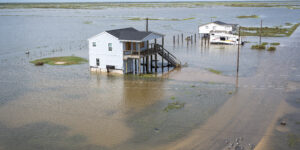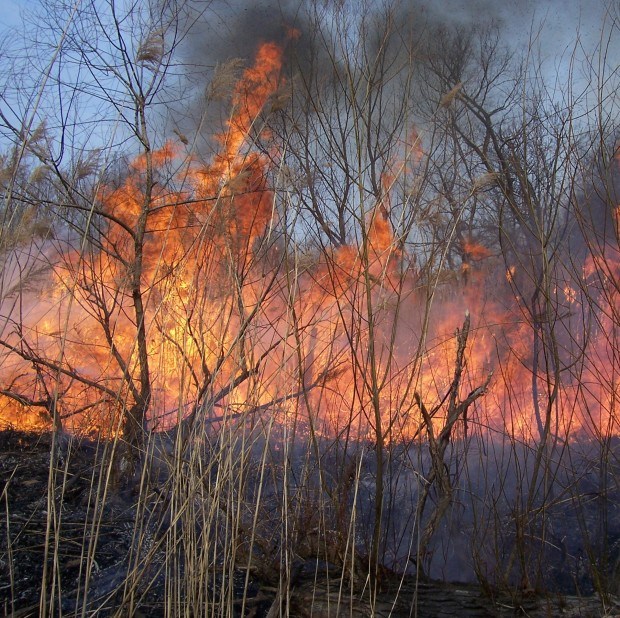A year after the Marshall Fire devastated suburban Colorado in the dead of winter, property/casualty insurers worldwide are grappling with the new realities of wildfire risk. They’ll need a three-pronged approach to avoid getting burned.
As someone who started my career as a claims adjuster, I’ve seen firsthand the financial and emotional misery unleashed by catastrophes like the Marshall Fire. I know the pain behind the words of people like Louisville, Colo., resident Nan Boultbee, who lost everything she owned when the blaze leveled her four-bedroom home last December.
“This is overwhelming for us,” she told the New York Times (‘I Have Absolutely Nothing’: After a Massive Winter Fire, What Is Left?) “We don’t have a home to go home to.” She was also far from alone. Fueled by 110-mile-per-hour winds, the inferno incinerated 1,000 homes and businesses across 6,000 acres even as forecasted snowfall threatened to freeze water pipes, the New York Times reported.
Such is the terrifying new world of wildfire in the age of climate change, which will only get worse. According to a February 2022 report from the UN environment programme and GRID-Arendal titled, Spreading Like Wildfire: The Rising Threat of Extraordinary Landscape Fires, the risk of catastrophic wildfires is expected to increase as rising temperatures intensify a “global wildfire crisis.”
Fighting the Firestorm Ahead
In the American West, persistent drought conditions like those in Colorado have put more than 60,000 communities in the U.S. at risk for wildland urban interface fires, according to a 2021 report from the National Association of State Foresters.
Executive Summary
As wildfire risks have grown in the past several years, they have become a significant contributor to insurance industry losses. With this in mind, insurers will need to rethink how they approach and respond to this risk, Laura Drabik, chief evangelist at Guidewire Software, writes. In this article, she shares three considerations for insurers as they look toward the future of climate change and wildfire risk.
With this in mind, wildfires have become significant contributors to insurance industry losses. Fire claims have grown to tens of billions of dollars annually in recent years, of which more than 70% came in the last five years alone, according to a January 2021 Swiss Re blog titled, Yet More Wildfires. As the frequency and severity of wildfire claims continue to climb, insurers need to rethink their game plan—fast.
But fair warning: Adding exclusions and increasing premiums only goes so far. Exiting entire lines in regions or states with high wildfire risk isn’t a growth strategy, either. Instead, here are three ways insurers can harness technology to revolutionize how they write, mitigate, and respond to wildfire risk.
1. Pricing Risk Right with Predictive Analytics
By now, most insurers recognize the need to run their operations on modern, cloud-based core systems that can turn vast amounts of internal and external data into a high-fidelity understanding of property risk. Traditional models and past loss experience alone won’t cut it anymore—especially when much of the historical climate data they’re based on is past its sell-by date.
Today, a growing number of insurers are gravitating to analytics providers that leverage geospatial data and intel from a wide array of high-quality sources to provide accurate, up-to-date property risk scores via API. When it comes to wildfire, solutions go beyond non-predictive data elements like slope and aspect to factor rainfall and vegetation burn points into scoring. Proximity to fuel load is also crucial since embers sent aloft can endanger homes blocks away. As a result, insurers can price risk accurately and avoid bad bets altogether.
2. Incentivizing Wildfire Mitigation Measures
Rewarding policyholders for taking steps to protect their property from the ravages of wildfire isn’t just a good idea. In California, it’s also the law.
Under the state’s new Safer from Wildfires framework, insurers operating in California must now provide discounts to homeowners and businesses undertaking substantive wildfire mitigation efforts. These can include installing a fire-resistant roof, removing vegetation or debris from around an insured structure, or deploying IoT sensors that detect wildfires at the smoldering stage and automatically alert firefighters.
The regulations are the first of their kind in the U.S. but could herald a wave of similar mandates elsewhere. Insurers with platforms that connect to a well-sourced ecosystem including real-time and evolving data that leverage high-resolution aerial imagery, computer vision, and AI technologies will have a distinct advantage over those requiring onsite inspections. When integrated into the right platform, for instance, solutions from providers like Betterview, Maptycs, and others can be used to instantly verify and discount mitigation measures—achieving regulatory compliance while enhancing the customer experience.
And that’s just the start. Cities like Miami, Florida, and Freetown, Sierra Leone, are appointing chief heat officers to take a proactive approach to global warming and wildfire prevention. Look for more initiatives in the future, like the expansive fire migration and resiliency efforts in Riba-Roja de Túria in Valencia, Spain.
3. Optimizing Proactive CAT Response
The ability to access actionable, real-time intelligence is critical to the triage and deployment of claims teams. In fact, modern technologies are transforming insurers from financial first responders into something far more profound during what can be a traumatic moment in people’s lives.
Today, insurers like Farmers Insurance and others are investing in next-gen drones and robots to quickly transmit images and intel back to claims offices without sending adjusters into dangerous situations post-catastrophe. When tied to advanced claims systems, solutions like Matterport, Hover and PLNAR use augmented and virtual reality to enable claimants or field adjusters to report damages and settle claims quickly by simply uploading pictures of the damage and details. Three dimensional “digital twins” are then auto-generated, putting claims managers into the scene from their desktop or tablet computer.
Leading-edge carriers are also leveraging new technologies to simplify and accelerate claims management through new forms of coverage like parametric insurance. Unlike traditional property coverage, a parametric policy might initiate payment to a farm when a wildfire exceeds a previously-established threshold, such as acres burned, rather than basing payment on damage to physical assets. For insurers, it’s a cost-effective way to streamline CAT response by automating payments at the exact time when the volume of incoming claims might otherwise overwhelm capacity.
Burning Questions: No Longer Just ‘How’
According to a 2022 report from Capgemini and the Insurance Information Institute titled, Tamping Down Wildfire Threats, only 35% of insurers have adopted technologies like the kinds I’ve described here. But as the threat posed by wildfire and other catastrophes continues to grow, those that do will have the competitive edge. The most nimble will deliver the perfect blend of automation and the human touch to create truly differentiated service.
Those behind the innovation curve may want to speed up. Given the availability of vast amounts of data and the technology to leverage it, the industry will increasingly become part of a much larger conversation. As Capgemini suggests, questions will move from how best to ensure individuals and communities can rebuild post-inferno to if and where to do so.
Momentarily recalling my days as an adjuster and the grim toll wildfire can exact on people like Colorado’s Nan Boultbee and far too many others each year, one thing seems clear. An ounce of prevention has never been worth so many pounds of cure.





















 Berkshire Hathaway Announces Leadership Appointments: New CEO at GEICO
Berkshire Hathaway Announces Leadership Appointments: New CEO at GEICO  Executives on the Move at HSB, American Modern Insurance Group, AIG
Executives on the Move at HSB, American Modern Insurance Group, AIG  The Hardest Part of Innovation in Insurance Isn’t Technology; It’s Culture
The Hardest Part of Innovation in Insurance Isn’t Technology; It’s Culture  Women Are Now Leaning Out in the Workplace
Women Are Now Leaning Out in the Workplace 





